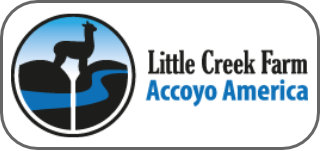- For many breeders, the key to consistent Harlequin Appaloosa alpaca color production has been a closely guarded secret. Because of the rarity, and increasing popularity, of this coloring, many breeders feel that this secrecy is critical to protect the gene's value. Their logic is certainly not invalid. I have seen this scenario played out in many, many animal industries throughout my lifetime, and I can attest that if a color is rare and valuable, there will be breeders out there who will seek to cash in on that popularity. These breeders will produce color for the sake of color, and will flood the market, thus eliminating the added “rarity factor” value. This is unfortunate, but the fact is that it is also inevitable. Serious, committed Harlequin Appaloosa breeders need to look beyond the “rarity factor” and focus on the future, which is quality. In order to produce quality Harlequin Appaloosas, however, we must first understand how to consistently produce Harlequin Appaloosas, so that we can focus on the quality and not the color. more »
- This is a little bit of a follow-up to a post I wrote (coincidentally, almost exactly a year ago now) on Huacaya alpaca Breed Standards. The original post was posted on a popular Facebook alpaca forum, and it generated quite a bit of controversy (as intended). A bit more recently, I posted this tentative outline of a commercial production-based Huacaya alpaca breed standard on the same forum. It, too, generated quite a bit of interest, though the response was surprisingly positive. Interestingly, the thing that the most people disagreed with was the line, "The only permissible color is white." I stand by that statement. Introducing color only muddies the water when to majority of production-based alpaca breeders wish to focus on white, and it's hard enough to breed for pure white as it is. more »
- The breed standard for the Cheshire Alpaca was developed by Howling Hill Farm to better define our breeding goals for our Huacaya alpacas. Like all breed standards, the below describes an ideal animal, the archetypical Cheshire Alpaca. Unlike the standards for most domesticated breeds, however, this standard describes an animal that is still developing. Many animals on our farm and others come very close to meeting this standard in many ways – some in nearly every defined trait. However, the majority fall short in some fashion, and this is to be expected, as development of the breed has only recently been undertaken. For this reason, many more faults are allowable than would be expected in a traditional breed standard, though the ideals are always described and noted in the preceding text. Over time, as the breed develops and more individuals are produced that meet the standard in its entirety, many faults will likely be moved from the category of “Major” to “Disqualifying." more »
- This may seem a bit out of context, but it is actually something I have been meaning to write for awhile. It may get its own page eventually, but for now, here it is in 'blog form: my feelings on the oft-debated issue of alpaca breed standards. Since the first commercial North American importation of alpacas in 1984, breeders in the United States have debated whether to draft a breed standard for the Huacaya alpaca. Breeders of the Suri alpaca – the cousin to the Huacaya, whose long, lustrous fiber somewhat resembles dredlocks from a distance – have had a breed standard in place since 2006. At the time of this writing, there is no such standard for the Huacaya. more »
- Lynn Edens, owner of Imperial Yarn and Little Creek Farm, has transformed a passion for spinning alpaca fiber into a thriving business and is on a mission to help other American-grown alpaca ranchers in the United States find success. Lynn was running a horse farm when she became interested in spinning. The first time she spun with alpaca, she was hooked. Alpaca fleece is available in grades as fine and uniform as cashmere yet offers distinct advantages over that other luxury fiber. “I loved the buttery handle and the brightness of the best-quality alpaca,” she says. “It was as soft as cashmere with comparable loft, but it also had great strength and longer fiber length, which makes for easier spinning and more consistent yarn.” She also discovered that this premier alpaca fiber was affordable relative to its quality. “This is because unlike cashmere goats, for instance, top-quality alpacas can produce pounds instead of ounces of elite-quality fiber every year.” more »
